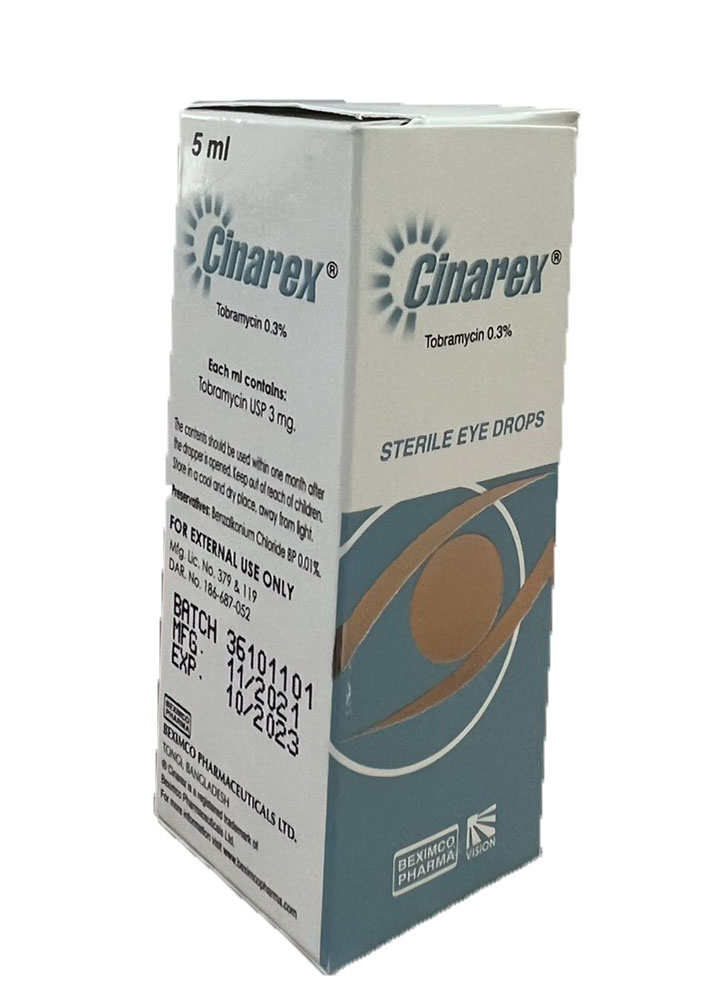Cinarex® (Tobramycin 0.3%) Eye Drop (5ml)

Generic
Tobramycin
Indications
Tobramycin eye drops is indicated for thetreatment of external infections of the eye and its appendages such as bacterial conjunctivitis, keratitis, corneal ulcer caused by susceptible bacteria.
Pharmacology
Tobramycin's bactericidal action is taken up into susceptible bacterial cells via an active transport pathway, similar to other aminoglycosides. Tobramycin binds to the 30s and, to a lesser extent, the 50s subunits of the bacterial ribosome within the cell, blocking protein synthesis and causing transcription mistakes. Cell death is poorly understood, and other mechanisms, such as changes in membrane permeability, may play a role.
Dosage & Administration
In mild to moderate infection, instill 1 drop 4-6 times daily into the conjunctival sac(s). In severe cases of infection, instill 1 drop hourly until improvement is obtained, then reduce the dose gradually. Duration of treatment is 5-15 days. Children: Clinical studies have shown Tobramycin ophthalmic preparation to be safe and effective for use in children.
Interaction
Specific drug interaction studies on Tobramycin ophthalmic preparation have not been established.
Contraindications
In patients with known hypersensitivity to any component of the product. Partial crossallergenicity to other aminoglycosides has been established.
Side Effects
The most frequent adverse reactions to Tobramycin are localized ocular toxicity and hypersensitivity, including lid itching and swelling and conjunctival erythema. These reactions occur in less than 3% of patients treated.
Pregnancy & Lactation
Pregnancy Classification B. In pregnant women, there are no sufficient and well-controlled trials. Only use this medication during pregnancy if the potential advantages outweigh the danger to the fetus. It is possible that the drug will be excreted in human milk. It must be decided whether to stop nursing or to take the medication.
Precautions & Warnings
As with other anti-infective, prolonged use mayresult in overgrowth of non-susceptibleorganisms, including fungi. If super-infection occurs, discontinue use and institute alternative therapy. Patients should be advised not to wear contact lenses if they have signs and symptoms of bacterial conjunctivitis.
Therapeutic Class
Ophthalmic antibacterial drugs
